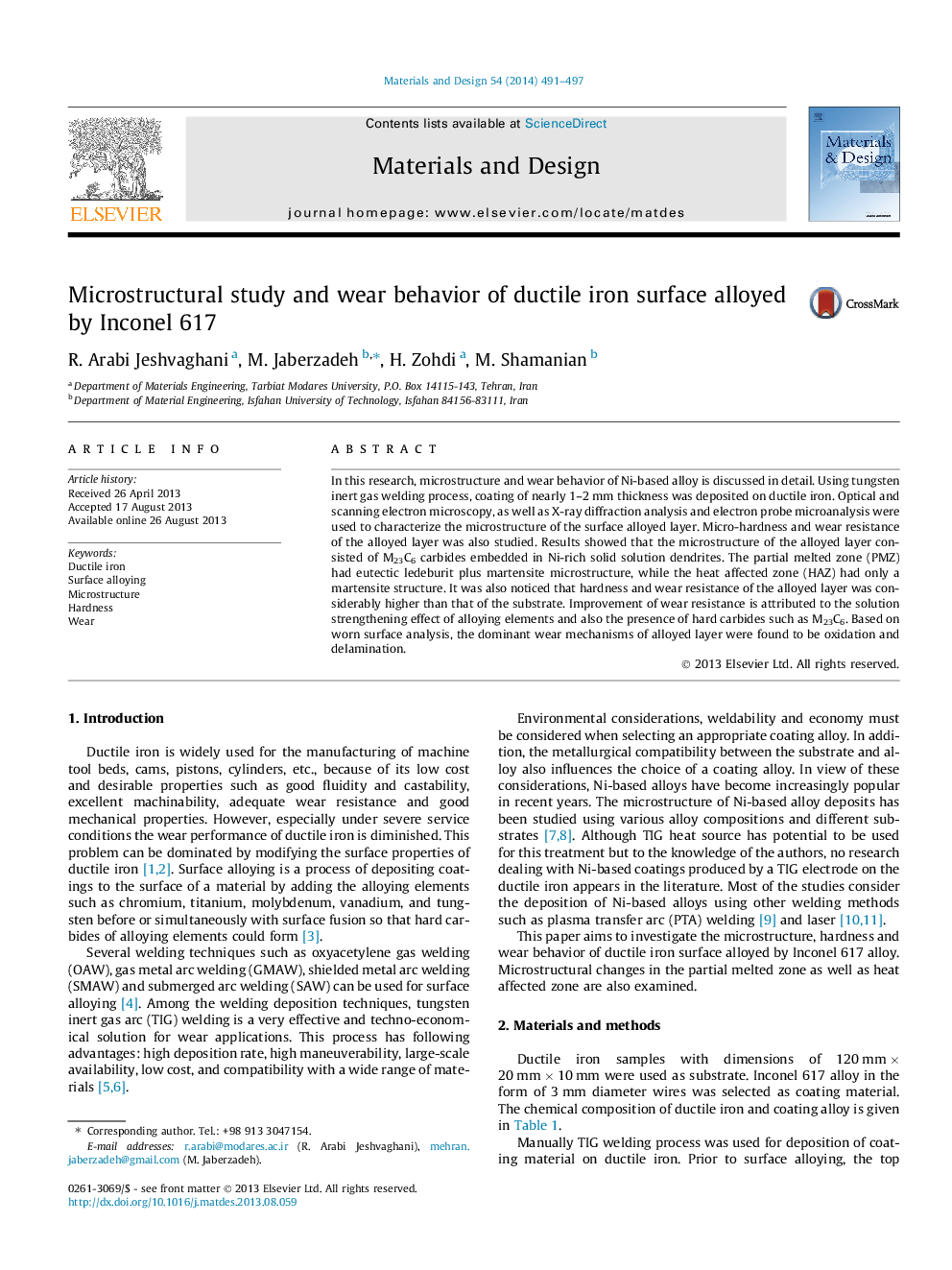| Article ID | Journal | Published Year | Pages | File Type |
|---|---|---|---|---|
| 829664 | Materials & Design (1980-2015) | 2014 | 7 Pages |
•The Ni-base alloy was deposited on the surface of ductile iron by TIG welding process.•Microstructure of alloyed layer consisted of carbides embedded in Ni-rich dendrite.•Hardness and wear resistance of coated sample greatly improved.•The formation of oxide layer and delamination were dominant mechanisms of wear.
In this research, microstructure and wear behavior of Ni-based alloy is discussed in detail. Using tungsten inert gas welding process, coating of nearly 1–2 mm thickness was deposited on ductile iron. Optical and scanning electron microscopy, as well as X-ray diffraction analysis and electron probe microanalysis were used to characterize the microstructure of the surface alloyed layer. Micro-hardness and wear resistance of the alloyed layer was also studied. Results showed that the microstructure of the alloyed layer consisted of M23C6 carbides embedded in Ni-rich solid solution dendrites. The partial melted zone (PMZ) had eutectic ledeburit plus martensite microstructure, while the heat affected zone (HAZ) had only a martensite structure. It was also noticed that hardness and wear resistance of the alloyed layer was considerably higher than that of the substrate. Improvement of wear resistance is attributed to the solution strengthening effect of alloying elements and also the presence of hard carbides such as M23C6. Based on worn surface analysis, the dominant wear mechanisms of alloyed layer were found to be oxidation and delamination.
